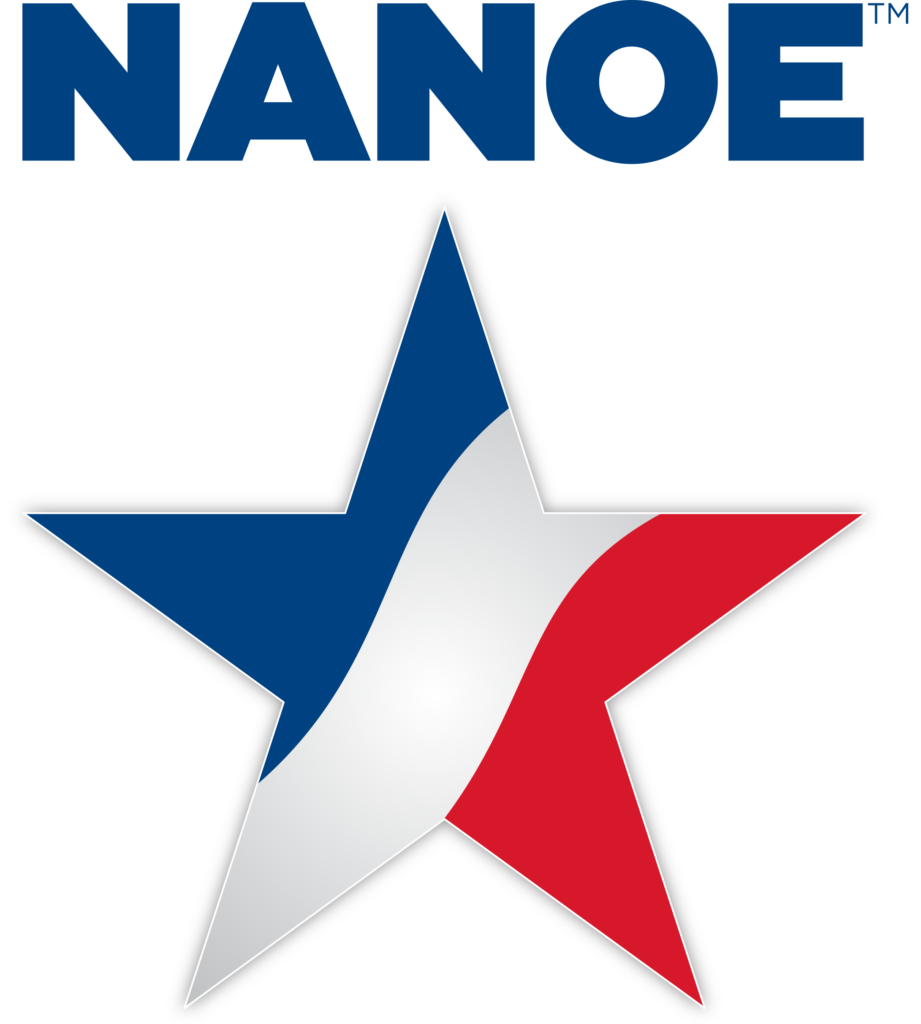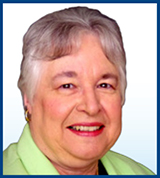
How to Score Your First And Next Million Dollar Gift
August 20, 2024How To Prevent Burnout: 5 Strategies for Your Nonprofit
August 22, 2024Kathleen Robinson’s RE-IMAGINING NONPROFIT GOVERNANCE
Kathleen Robinson’s RE-IMAGINING NONPROFIT GOVERNANCE provides charitable leaders an opportunity to tackle one of charity’s biggest obstacles…PEOPLE! Read below an introduction to her forthcoming 150 plus page written work of the same name to be published by NANOE in 2025. Here’s a first look at Dr. Robinson’s insights into organizational oversight:
Effective governance can empower leaders and staff to higher productivity, worker satisfaction, board and staff engagement, greater customer satisfaction with services, and significant positive change in staff, board members, volunteers, and customers.
We all want to belong to organizations that have dynamic supportive leaders who govern effectively. We want to know what is expected of us. We want to participate in setting and contributing to the direction of the organization. People leave leaders, not the organization per se. Staff and volunteers want an relational environment that empowers them, supports them, includes them, cares about them, and is fair and just.
Kathleen Robinson’s RE-IMAGINING NONPROFIT GOVERNANCE
Leader burnout is within the top five major concerns of nonprofit leaders in 2024, as it has been for some years. Worker retention is also a major issue. We hope some of the guidelines in this book will help focus your efforts and understand your primary roles and responsibilities. Many EDs are simply trying to do too much. We offer suggestions to focus your work and share the load with others in meaningful, clarified ways.
We address situations in which leaders inherit nonprofits that are limping along and engaged in ineffective business and service transactions. We examine situations in which governance and leadership transactions are ineffective, harmful, or illegal. Good governance helps nonprofits get needed infusions of resources, stimulates innovative ideas, attracts the talent needed, and clarifies the organization’s direction. Your organization is people. How leaders govern significantly affects worker satisfaction, and the role people have in governance decision making in your organization.
As people come and go, our governance interactions, structures, and communication must change too. Effective governance is context and people specific. What worked well in one context may not work in another. Leaders alter governance structures and processes to meet the push and pulls for authority and control among various stakeholders.
As stakeholders change so do expectations for participation in governance. While the board has a significant role in governance, there are several other groups that also exert their authority and control over the nonprofit’s work, people, leaders, resources and directions. This makes leaders’ governance duties challenging. The wisdom of the group keeps governance systems effective and compliant.
We all want to control our work, be treated fairly and with respect, and be a part of setting the organization’s direction. We all want to be a part of an organization that produces positive change. A major challenge for leaders is to figure out what to control and how, and when to let go and let others lead and govern. This book tries to give some help on how to do this.
We challenge you to examine and re-imagine your governance beliefs and behaviors. We ask you to enhance your governance systems. We provide several real cases studies of nonprofits that struggled to implement governance systems that worked, were legal, fair and just. As they say, reality is stranger than fiction!
Anthony Bell’s insights on the primary roles and responsibilities of leaders are extremely valuable to those wanting to avoid burnout. His insights help sector leaders learn to focus on their primary responsibilities and find others to share the load so that the organization’s services and operations are more effectively addressed and aligned. His insights form the basis for some of the principles outlined in this book. Jimmy LaRose long ago advocated for boards to find a more productive role considering the increased talent and expertise of today’s nonprofit EDs. He has long advocated for re-thinking the ED-board role and responsibility relationships. Everyone is concerned about how dysfunctional so many nonprofit boards are. And how burned out so many EDs are! We offer suggestions for making leadership and governance relationships productive, engaged, and satisfying to all involved and how to avoid some of the circumstances that lead to burnout.
Our goal is to help your organization create effective governance structures and processes! We want you to be equipped to govern to achieve your organization’s mission and desired direction. We want nonprofit leaders to have the confidence needed to govern their staff, volunteers, and board in ways the spark innovation, productivity, engagement, and uphold, defend, and protect the corporation’s interests. We hope you will learn from nonprofits that struggled to govern properly and avoid some of the mistakes they made.
In a recent survey done by the Independent Sector 60% of respondents said that their trust in nonprofits would increase if nonprofits were transparent with their ethical principles and held themselves to account for how their ethical principles tangibly manifested themselves in service and business operations and leader conduct.[i] That’s one of the governors’ responsibilities in your organization. We offer your governors practical ways to show your organization is superior in the practical application of ethical and legal principles in your service and business transactions.
Some people put up unnecessary barriers to moving forward in building your organization’s capacity. Some governors are simply disengaged and need to be let go. We want to help you maneuver around and deal effectively with some of the governance barriers and dysfunction you face. Why? As the Independent Sector report indicates, “without the public’s trust, everything your organization tries to do becomes harder, if not impossible!” When leaders engage in effective governance, trust is built.
[i] Independent Sector, & Edelman Data and Intelligence (DXi). (2024). Trust in Nonprofits and Philanthropy: Strengths and Challenges in A Time of Division. June 2024. As retrieved online at IndependentSector.org
Kathleen Robinson’s RE-IMAGINING NONPROFIT GOVERNANCE was first posted at INSIDE CHARITY
For more articles like Kathleen Robinson’s RE-IMAGINING NONPROFIT GOVERNANCE VISIT HERE
ABOUT NANOE:
National Association of Nonprofit Organizations & Executives (NANOE) is a nationwide network of donors, volunteers and charitable leaders whose relentless commitment to significant and sustainable impact transforms the communities we serve. NANOE members are innovators who solve problems (not just service them) by deploying heroic missions of scale that confront social and environmental dilemmas so completely that money chases after their every need.
 712 H Street NE Suite 1149
712 H Street NE Suite 1149
Washington, DC 20002
(800) 257-6670
ABOUT THE AUTHOR:
 During her fifty-year career, Dr. Kathleen Robinson worked in community and regional support systems development for at-risk families, children and youth organizations, community-based literacy systems, holistic family centers and nonprofit human services organizations. In addition, her focus has been on systems-based approaches to community planning and policy development, and social impact assessments of various community change projects. Her expertise is rural, integrated community development. Dr. Robinson previously served as Director of the Center on Neighborhood Development and the Director of the Center on Nonprofit Leadership within the Institute on Families and Neighborhood Life at Clemson University (1998-2009). She also co-lead in the development of the Institute’s PHD program in International Family and Community Studies. Prior to her work at Clemson University, she was Associate Director and Research Professor at the Institute for Families in Society and Director of the Division on Neighborhood Development at the University of South Carolina (1995-1998). From 1981-1995, she was a tenured Assistant and Associate Professor in the College of Agriculture and Human Resources (Department of Human Resources), an Associate Professor in the College of Social Sciences (Department of Urban and Regional Planning), and Research Associate in the Center on Youth Development at the University of Hawaii at Manoa. In 1977, she and her husband moved to Hawaii where she was a Research Associate in the Culture Learning Institute at the East-West Center (1978-1981) before joining the UHM faculty. From 1975-1978, she was a senior graduate assistant and Research Associate in the Nonformal Education Institute at Michigan State University working on a multi-million dollar USAID project in Indonesia to enhance the nation’s teacher training college system to include, among other things, an emphasis on community development initiatives. In addition, she served as Vice President of Program and Publications for Pioneer Girls, a faith-based, interdenominational, international girls club, camp and women’s leadership development program (1970-1975). From 1967-1970, she was a graduate assistant in the College of Education at Texas Women’s University working on marine biology science curriculums for inland schools, and a science teacher in the Denton Texas public school system. While studying at Moody Bible Institute, she founded and directed an out of school child and teen development and literacy center in two housing projects in Chicago, as well as founding and hosting a radio program at WMBI (1964-1970). Dr. Robinson testified several times before the U.S. Congress, several states’ legislative bodies, and the United Nations. She served as a consultant to numerous state social service, health, juvenile justice, governors’ offices, environmental, and municipal agencies. Internationally she was a consultant to 28 international organizations, including several divisions of the United Nations, the U.S. Agency for International Development, the International Institute for Applied Systems Analysis, ASEAN and the All Union (USSR) Academy of Sciences, Asian Development Bank, Asian Institute for Technology, Australian Commonwealth’s Scientific and Industrial Research Organization, Canadian International Development Agency, Chulalongkorn University Social Research Institute, European Centre For Social Welfare Policy and Research, the German Development Bank, German Ministry of Education, Indonesian Ministry of Education and Culture, and the U.S. Peace Corps. She has received numerous awards and recognitions from her work, including several fellowships and an Award of Distinction from the National Association of State Universities and Land Grant Colleges for her leadership of a national task group to add new science understanding to what was offered through schools and colleges of Agriculture and Natural Resources across the U.S. She was awarded the University of Hawaii Regents’ Medal for Excellence in Teaching in 1990, the highest award given at UHM. She also has received awards of distinction from the U.S. Peace Corps and USDA for her community development work. At the University of South Carolina, she was recognized for her contributions to research productivity, and received three faculty excellence awards while at Clemson University. Texas Woman’s University honored her in 2015 with the Chancellor’s Alumni Excellence Award and, that same year, the National Development Institute awarded her their 25th anniversary Nonprofit Leadership Award. In 2017, the National Association of Nonprofit Executives and Organizations honored her with their first Robinson Lifetime Achievement Award. She received letters of commendation from three states’ governors for her work in enhancing various aspects of human service delivery systems. Having traveled and worked in 151 countries, she is a recognized leader in rural community development in a variety of national and cultural contexts. She retired in 2009 from Clemson University but remains affiliated with the Institute as an Adjunct Professor. Since her retirement, she has remained active in leadership roles within two charter schools, National Development Institute and the National Association of Nonprofit Organizations & Executives. She currently lives in the greater Phoenix, AZ area.
During her fifty-year career, Dr. Kathleen Robinson worked in community and regional support systems development for at-risk families, children and youth organizations, community-based literacy systems, holistic family centers and nonprofit human services organizations. In addition, her focus has been on systems-based approaches to community planning and policy development, and social impact assessments of various community change projects. Her expertise is rural, integrated community development. Dr. Robinson previously served as Director of the Center on Neighborhood Development and the Director of the Center on Nonprofit Leadership within the Institute on Families and Neighborhood Life at Clemson University (1998-2009). She also co-lead in the development of the Institute’s PHD program in International Family and Community Studies. Prior to her work at Clemson University, she was Associate Director and Research Professor at the Institute for Families in Society and Director of the Division on Neighborhood Development at the University of South Carolina (1995-1998). From 1981-1995, she was a tenured Assistant and Associate Professor in the College of Agriculture and Human Resources (Department of Human Resources), an Associate Professor in the College of Social Sciences (Department of Urban and Regional Planning), and Research Associate in the Center on Youth Development at the University of Hawaii at Manoa. In 1977, she and her husband moved to Hawaii where she was a Research Associate in the Culture Learning Institute at the East-West Center (1978-1981) before joining the UHM faculty. From 1975-1978, she was a senior graduate assistant and Research Associate in the Nonformal Education Institute at Michigan State University working on a multi-million dollar USAID project in Indonesia to enhance the nation’s teacher training college system to include, among other things, an emphasis on community development initiatives. In addition, she served as Vice President of Program and Publications for Pioneer Girls, a faith-based, interdenominational, international girls club, camp and women’s leadership development program (1970-1975). From 1967-1970, she was a graduate assistant in the College of Education at Texas Women’s University working on marine biology science curriculums for inland schools, and a science teacher in the Denton Texas public school system. While studying at Moody Bible Institute, she founded and directed an out of school child and teen development and literacy center in two housing projects in Chicago, as well as founding and hosting a radio program at WMBI (1964-1970). Dr. Robinson testified several times before the U.S. Congress, several states’ legislative bodies, and the United Nations. She served as a consultant to numerous state social service, health, juvenile justice, governors’ offices, environmental, and municipal agencies. Internationally she was a consultant to 28 international organizations, including several divisions of the United Nations, the U.S. Agency for International Development, the International Institute for Applied Systems Analysis, ASEAN and the All Union (USSR) Academy of Sciences, Asian Development Bank, Asian Institute for Technology, Australian Commonwealth’s Scientific and Industrial Research Organization, Canadian International Development Agency, Chulalongkorn University Social Research Institute, European Centre For Social Welfare Policy and Research, the German Development Bank, German Ministry of Education, Indonesian Ministry of Education and Culture, and the U.S. Peace Corps. She has received numerous awards and recognitions from her work, including several fellowships and an Award of Distinction from the National Association of State Universities and Land Grant Colleges for her leadership of a national task group to add new science understanding to what was offered through schools and colleges of Agriculture and Natural Resources across the U.S. She was awarded the University of Hawaii Regents’ Medal for Excellence in Teaching in 1990, the highest award given at UHM. She also has received awards of distinction from the U.S. Peace Corps and USDA for her community development work. At the University of South Carolina, she was recognized for her contributions to research productivity, and received three faculty excellence awards while at Clemson University. Texas Woman’s University honored her in 2015 with the Chancellor’s Alumni Excellence Award and, that same year, the National Development Institute awarded her their 25th anniversary Nonprofit Leadership Award. In 2017, the National Association of Nonprofit Executives and Organizations honored her with their first Robinson Lifetime Achievement Award. She received letters of commendation from three states’ governors for her work in enhancing various aspects of human service delivery systems. Having traveled and worked in 151 countries, she is a recognized leader in rural community development in a variety of national and cultural contexts. She retired in 2009 from Clemson University but remains affiliated with the Institute as an Adjunct Professor. Since her retirement, she has remained active in leadership roles within two charter schools, National Development Institute and the National Association of Nonprofit Organizations & Executives. She currently lives in the greater Phoenix, AZ area.
